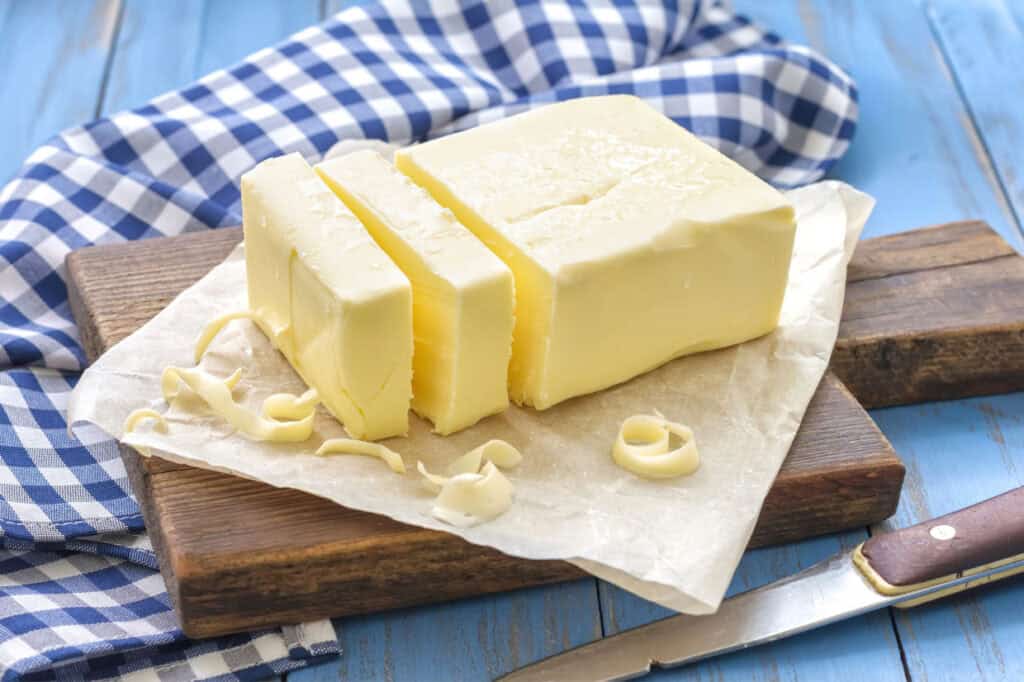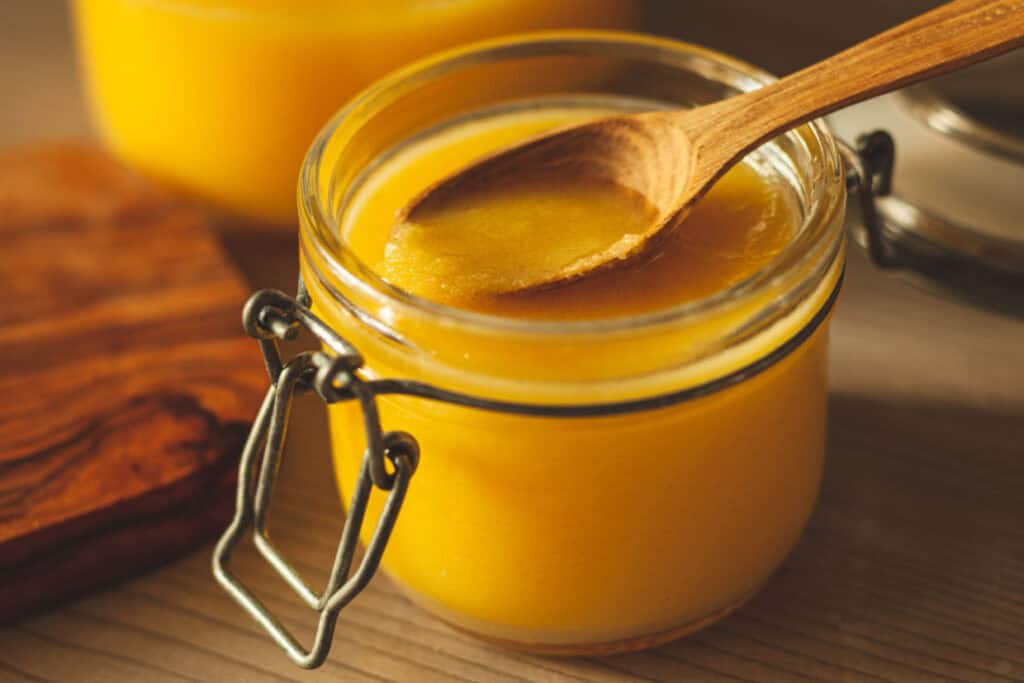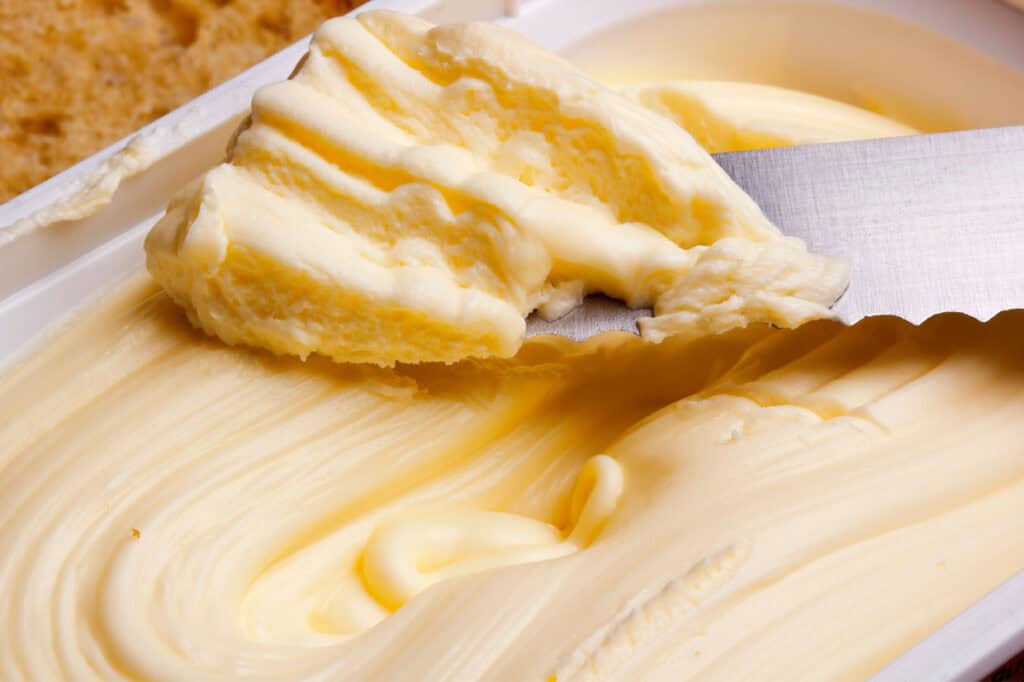Butter is one of the most versatile ingredients in the kitchen, but did you know there are many different types of butter to choose from? Each variety brings its own unique flavor and texture to recipes, from baking cakes to sauteing vegetables. Understanding these differences can help you pick the perfect butter for every dish and improve your cooking.

Whether you prefer the clean taste of unsalted butter, the tangy richness of cultured butter or the high-heat stability of clarified butter, there’s a type of butter for every need. Let’s take a closer look at the common varieties and how to use them.
What is butter?
Butter is made by churning cream until the fat separates from the liquid, known as buttermilk. This process creates a solid, creamy product perfect for cooking, baking and adding flavor.
- Butter contains about 80% fat, giving it a rich texture and taste.
- It’s a versatile ingredient used in everything, from frying to making sauces.
Understanding how butter is made can help you appreciate its role in your kitchen. Knowing the basics also makes it easier to decide which type of butter to use for different recipes.
Common types of butter
There are several types of butter, each offering distinct characteristics for different uses in cooking and baking. Whether you need precise control over flavor, a rich tang or a butter that handles high heat, there’s a butter for every purpose.
Unsalted butter
Unsalted butter is made without added salt. Using this butter gives you full control over the flavor in your recipes. It’s the go-to choice for baking.
- It is ideal for recipes where precise salt levels are important, like cakes and cookies.
- It is also great for sauteing or as a base for homemade sauces.
Keep a stick of unsalted butter on hand for baking or whenever you want a clean, pure butter flavor. Its neutral taste lets the other ingredients shine.
Salted butter
Salted butter has a touch of salt added during production, making it perfect for spreading and cooking. Manufacturers typically add about 1/4 teaspoon of salt per 1/2 cup of salted butter.
- Use it for quick flavor boosts on bread, vegetables or grilled cheese.
- Avoid using it in baking unless a recipe specifically calls for it.
Salted butter is a great all-purpose choice, but its salt content means adjusting the seasoning in your recipes is a must. Keep it in the fridge for everyday use.
Cultured butter
Cultured butter is made from cream that’s been fermented, giving it a tangy, rich flavor. It’s especially popular in gourmet cooking. Cultured butter is worth a try if you’re looking for butter with depth.
- Perfect for spreading on bread or incorporating into sauces.
- Its flavor pairs well with sourdough and hearty baked goods.
Clarified butter or ghee
Clarified butter is made by removing the milk solids from regular butter, leaving pure butterfat. Ghee is a type of clarified butter often used in Indian cooking.
- The high smoke point makes it great for frying and sauteing.
- Adds a nutty flavor to dishes like curries and roasted vegetables.
Keep clarified butter or ghee on hand for high-heat cooking. It’s a game-changer for dishes that need a touch of richness.

Specialty butters
Specialty butters offer unique textures and flavors, perfect for enhancing specific dishes. From the rich creaminess of European-style butter to the light spreadability of whipped butter, these options bring something special to your kitchen.
European-style butter
European-style butter has a higher butterfat content, about 82-85%, making it richer and creamier. This butter is a baker’s dream, especially for flaky or tender pastries. It has a luxurious texture and is worth the splurge for special recipes.
- Ideal for pastries, croissants and other baked goods.
- Enhances the flavor of sauces and spreads.
Whipped butter
Whipped butter is regular butter with air whipped into it, making it light, convenient and easy to spread. Keep it on the table for a quick, effortless spread.
- Best for spreading on toast, bagels or pancakes.
- It is not suitable for baking due to its lower density.

Vegan butter alternatives
Vegan butter substitutes are made from plant-based oils like coconut, olive or sunflower oil. Many brands offer products that taste surprisingly close to the real thing. For those avoiding dairy, vegan butter is a versatile option.
- Perfect for dairy-free baking and cooking.
- Comes in spreads and sticks, just like regular butter.
Margarine is a butter substitute made from vegetable oils, such as soybean, sunflower or palm oil, making it typically vegan. It’s blended with water, salt and sometimes other ingredients like emulsifiers and preservatives. Originally created as a cheaper alternative to butter, margarine has a similar texture, though its flavor is often less rich. It’s commonly used for spreading, baking and frying. Additionally, some margarines are fortified with vitamins to provide extra nutritional benefits.
“I love using European butter like Kerrygold while cooking. It has a higher butterfat content and less water than regular butter, making everything from pastries to sauces richer, creamier and downright indulgent. I use it anytime I am baking something flaky! Totally worth the splurge.”
— Shruthi Baskaran-Makanju, Urban Farmie
Choosing the right butter for your needs
Choosing the right butter can significantly enhance your cooking and baking. You’ll notice a remarkable difference in flavor and texture by matching the type of butter to your dish.
- Baking: Use unsalted butter for precise control over flavor.
- High-heat cooking: Opt for clarified butter or ghee to avoid burning.
- Everyday use: Keep salted butter for spreading and simple sautes.
- Special occasions: Try European-style butter for rich, decadent recipes.
Final thoughts
Butter comes in many varieties, each with its own strengths. Whether baking a cake, cooking a meal or just spreading it on toast, knowing the types of butter can make all the difference. Try experimenting with different kinds to find your favorites, and let butter work its magic in your kitchen.
Jere’ Cassidy is the writer and recipe developer behind the blog One Hot Oven. A passion for all things food-related led her to culinary school to expand her baking skills and now to share easy recipes for all home cooks and bakers of all skill levels. When not in the kitchen, Jere’ likes to travel far and wide to find delicious food.